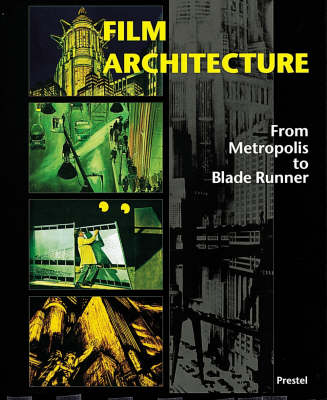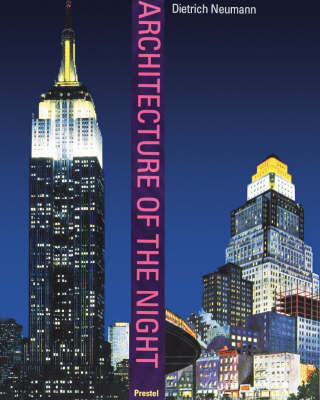Architecture S.
2 total works
Through a series of contributions from major scholars, this book examines visionary architecture in films by focusing on original set designs from filmmakers across Europe and the United States. The book begins with medievalizing, expressionistic and psychological sets for films, such as "The Cabinet of Dr Caligari" and "Algol", and moves on to experimental depictions of the anticipated modern city in such films as "Asphalt and Sunrise" and the dark view of the future in "Metropolis". The cinema of the Weimar Republic is taken as a case study, as both architecture and film played an important role in the social and cultural self-definition of the young state, which found itself searching for its own brand of modernity between neo-medievalism and Americanism. The text traces later responses to the early, far-reaching discussions about the relationship between film, architecture and the city by presenting original visionary designs for American films. "The Fountainhead" is shown as an example of how the ideology of modern architecture was presented to a mass audience in the United States.
"Blade Runner" and "Batman" present a post-modern, dystopian view of the city following the earlier cinematic discussions of "Metropolis". "Dick Tracy" and "The Hudsucker Proxy" represent yet another approach, in their nostalgic reflections on an imaginary New York of the past. The book is illustrated with many familiar backdrops to famous movies. It combines original set designs with publicity stills and prints from actual footage. It elucidates the role of the set designer in the creation of a movie, documents the process from the initial sketch to the final product, and places set design in relation to contemporary architectural debates, illustrating its position relative to painting, stage design and architecture. The volume is published to coincide with an exhibition of the same name at Brown University in Providence, Rhode Island, at the Academy of Motion Pictures Exhibition Gallery in Los Angeles and at another key venue in the United States, before being shown at the Film and Architecture Museums in Frankfurt.
"Blade Runner" and "Batman" present a post-modern, dystopian view of the city following the earlier cinematic discussions of "Metropolis". "Dick Tracy" and "The Hudsucker Proxy" represent yet another approach, in their nostalgic reflections on an imaginary New York of the past. The book is illustrated with many familiar backdrops to famous movies. It combines original set designs with publicity stills and prints from actual footage. It elucidates the role of the set designer in the creation of a movie, documents the process from the initial sketch to the final product, and places set design in relation to contemporary architectural debates, illustrating its position relative to painting, stage design and architecture. The volume is published to coincide with an exhibition of the same name at Brown University in Providence, Rhode Island, at the Academy of Motion Pictures Exhibition Gallery in Los Angeles and at another key venue in the United States, before being shown at the Film and Architecture Museums in Frankfurt.
The art of architectural floodlighting, which first came into existence at the beginning of the 20th century, has seen a world-wide renaissance in more recent years. This is an in-depth and illustrated account of the history of architectural illumination in American and European cities. While the work serves as a historical survey of architectural lighting throughout the 20th century, it also examines the cultural, social and artistic issues surrounding this phenomenon. During the 1920s and 30s architectural floodlighting was at its most intense, considered an essentially modern abstract art form that crossed the boundaries between film, architecture and painting. This study explores this dynamic period in depth, considers its impact today, and addresses the new issues that confront contemporary lighting, such as "light pollution", conservation, and aesthetics.
The book features close to 200 illustrations and examines 100 examples of building illumination, including the Opera House, Paris (1880), the Gas and Electric Building, Denver (1910), the Empire State Building, New York (1931), the Seagram Building, New York (1958), the Lloyds Building, London (1988), and the Anzeiger Hochhaus, Hanover (2000).
The book features close to 200 illustrations and examines 100 examples of building illumination, including the Opera House, Paris (1880), the Gas and Electric Building, Denver (1910), the Empire State Building, New York (1931), the Seagram Building, New York (1958), the Lloyds Building, London (1988), and the Anzeiger Hochhaus, Hanover (2000).

